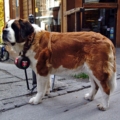A journey through Kraków reveals more than Gothic facades and medieval squares. It opens a path through memory, culture, and reflection, where personal histories intersect with places of quiet resonance. Beyond its postcard-perfect Old Town, Kraków also tells another story—quieter, more introspective—shaped by two influential figures: Karol Wojtyła, later Pope John Paul II, and Helena Kowalska, better known as Sister Faustina, remembered for her writings on mercy and inner transformation.
This itinerary is not a pilgrimage in the conventional sense. It is a cultural path through sites where these individuals lived, worked, and left enduring legacies.
1. Sanctuary of Divine Mercy: In the Footsteps of Faustina
In the Łagiewniki district, just outside Kraków’s center, stands the Sanctuary of Divine Mercy—now a global point of reference for those drawn to Faustina’s story. She spent her final years here, passing away in 1938, and is buried at the convent that remains active today.
The adjacent Chapel of the Miraculous Image holds a painting based on her vision of Christ—one hand raised in blessing, with two rays emerging: one red, one pale. In 2002, John Paul II consecrated a new basilica beside the chapel. Since then, the site has become an international destination tied to her legacy.
Faustina once wrote, “From here the spark must go forth to prepare the world.” That spark remains part of Kraków’s living heritage.
2. John Paul II Center: Memory and Mission
On the grounds of a former quarry where Wojtyła once labored during Nazi occupation stands the modern John Paul II Center, named after his well-known phrase: “Do not be afraid.” The site houses: a church adorned with expansive mosaics, a crypt containing personal relics, including a vial of his blood, and an interactive museum chronicling his life and papacy.
The complex serves as more than a memorial. It reflects Wojtyła’s view of spirituality as inseparable from public engagement—faith translated into responsibility and action.
3. The Bishop’s Palace and the “Papal Window”
At Franciszkańska Street 3, in Kraków’s historic core, stands the Bishop’s Palace, once home to Karol Wojtyła before his election to the papacy. Its most recognizable feature is the window from which he addressed crowds, often late into the night, during return visits.
Today, a mosaic marks the spot. In the evenings, visitors still gather in quiet reflection—some leave flowers, others sit in silence. It remains a modest but meaningful point of contact between past and present.
4. Wawel Cathedral: Between Nation and Spirit
On Wawel Hill, the Cathedral of Saints Stanislaus and Wenceslaus rises as one of Poland’s most emblematic religious and civic monuments. Here, Wojtyła was ordained bishop in 1958 and celebrated numerous Masses central to his early ministry.
The cathedral’s chapels and crypts trace the arc of Polish history, housing tombs of monarchs, poets, and national heroes. It is a space where spiritual and national identities converge, and where Wojtyła’s formation as a public figure began.
5. Jesuit Collegium: Wartime Study and Cultural Roots
Near the Church of Saints Peter and Paul lies a discreet building once used as a Jesuit college. During the German occupation, Wojtyła studied theology and philosophy here in secret. He also wrote poetry, engaged with theatre, and cultivated a belief in culture as a form of human resilience.
To walk these streets today is to trace the formative layers of a mind shaped equally by intellect and adversity.
6. Faustina’s Cell: A Room of Stillness
Back in Łagiewniki, one final stop offers a striking contrast to the large sanctuaries: the small room where Faustina lived and wrote much of her diary. Simple and austere, the space preserves the atmosphere of contemplation and struggle found in her writings.
Her reflections capture both mystical experience and the everyday challenges of illness, isolation, and perseverance. The room holds not grandeur, but presence—a quiet intensity that continues to resonate.
Kraków: A City of Living Memory
Kraków is not a static repository of religious tradition. Its vitality lies in the interplay of history and daily life, where sanctuaries stand beside cafés and bookstores, and where memory persists in the rhythm of the city.
To follow the paths of John Paul II and Sister Faustina is not solely to remember, but to reflect. Their legacies invite a return to foundational values—dignity, compassion, and conscience—in a world where such values remain under negotiation.
Practical Travel Notes:
- Recommended stay: 3 to 4 days for both Kraków and Łagiewniki.
- Getting there: Direct flights to Kraków-Balice Airport; the city center is accessible by bus or taxi.
- Local transport: Efficient tram and bus network; major sites are well connected.
- Language: Italian is commonly spoken in religious sites; English is also widely used.
- Best seasons: Spring (April–June) and autumn (September–October) offer mild weather and fewer visitors.




